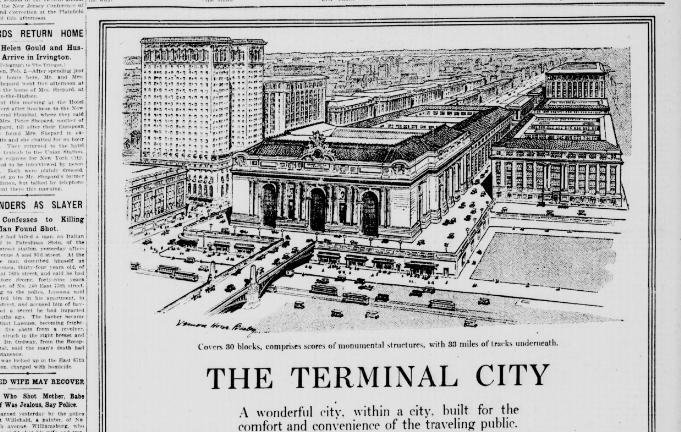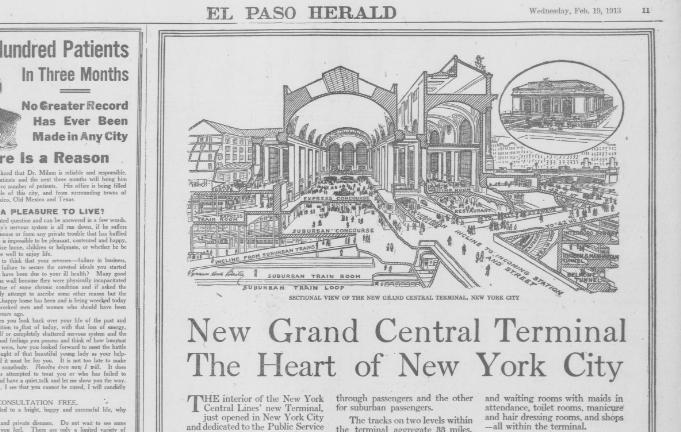|
Moderated by NW Okie! |
Volume 15 , Issue 52013Weekly eZine: (366 subscribers)Subscribe | Unsubscribe Using Desktop... |
NYC's Grand Central Terminal - 1913

Did you know that New York City's Grand Central Terminal had its grand opening 100 years ago? We found this advertisement in several newspapers dating back to Wednesday, 19 February 1913. In the El Paso Herald, out of El Paso, Texas, on page 11, in the Mining and Society Section, this is the advertisement or story concerning the "New Grand Central Terminal The Heart of New York City."
 The interior of the New York Central Lines' new Terminal, just owned in New York City and dedicated to the Public Service. It was a marvel in size and compactness, beauty and utility, comfort and convenience, a terminal larger than and different from any other in the world during its time.
The interior of the New York Central Lines' new Terminal, just owned in New York City and dedicated to the Public Service. It was a marvel in size and compactness, beauty and utility, comfort and convenience, a terminal larger than and different from any other in the world during its time.
The broad inclined walks took the place of stairs. The distance from street to train was a short, easy walk. Standing at the center entrance on 42nd Street you could see "The Twentieth Century Limited," across the waiting room and concourse. The movement of the traveler was a progressive one, the ticket windows coming first, the Pullman windows next, the baggage office third, then your train.
There were no steps to retrace, no time lost, passengers proceeding direct from waiting room or concourse to train platforms. There were two great concourses, each 300 by 120 feet, one for through passengers and the other for suburban passengers. The tracks on two levels within the terminal aggregate 33 miles. Forty-nine acres were devoted to through traffic and thirty acres to suburban traffic.
Thirty thousand people could be comfortably accommodated int his terminal at one time. Over twenty million would use it in a year, indeed it was planned to accommodate a hundred million people annually.
All trains entering and departing front he Terminal were drawn by electric motors, no smoke, no noise, no dust, no soot. Train platforms were broad, and level with car floors; no steps to climb or descend. For the comfort and needs of women,there were private rest rooms and waiting rooms with maids in attendance, toilet rooms, manicure and hair dressing rooms, and shops, all within the terminal.
Surrounding the Terminal was building a new civic center, embracing convention, amusement and exhibition halls, hotels, clubs, and restaurants, post office express offices, modern office and apartment buildings and numerous stores and specially shops.
The new Grand Central Terminal was located in the heart of New York, and was the only station on all lines of local traffic, the subway, the surface and the elevated. More than 7000 cars pass its doors every day, affording easy transit facilities to the furthermost part of New York City and suburbs. With in a radius of a few blocks were 49 hotels, 58 clubs and 35 theatres.
| View or Add Comments (0 Comments)
| Receive
updates ( subscribers) |
Unsubscribe
| © . Linda Mcgill Wagner - began © 1999 Contact Me | |
